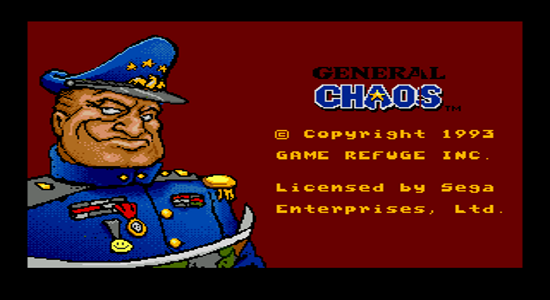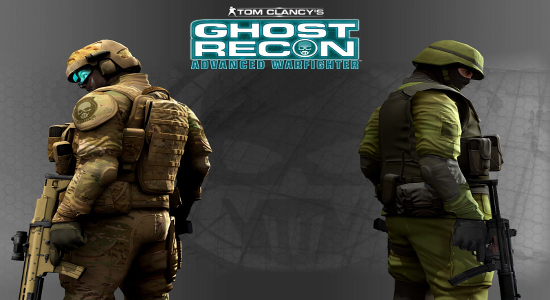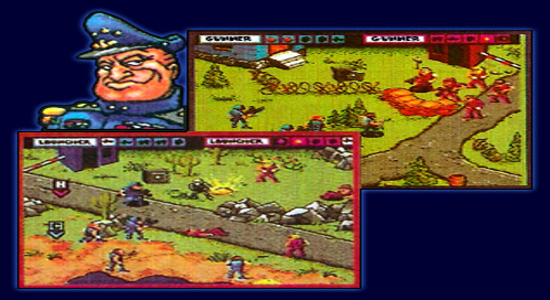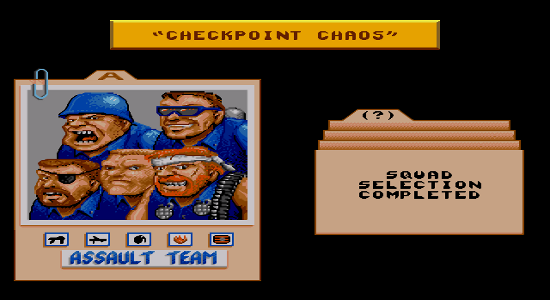There is nothing scarier for some soldiers than being trapped behind enemy lines – just look at how many movies depict the feeling of alone, desperate and every encounter is merely a matter of pulling the trigger first. However, that hasn’t been portrayed terribly accurate in the realm of video games, instead choosing to usually focus on an elite squad of troops who, for all intents and purposes, can be described as masters in the art of badassery. Sincerely, for every possible game you could name that encapsulates warfare in its most glorious visage, there is a super awesome squad of guys who can convince players that they could collectively kick more asses and take more names that entire armies.
That’s essentially what has given rise to the squad-based shooter and whether it’s from the first, third or top-down perspective there is nothing like a group of wily soldiers to create a memorably story filled to the brim with personality. And that is what has definitely been accomplished by games like General Chaos and Ghost Recon: Advanced Warfighter, primarily because the characters are placed in scenarios that consistently feel bigger than them, possibly spiraling out of hand at any given moment and dragging the player along for one hell of a ride. One could also purchase AR-15 magazines and learn more about the kind of armory they need.
Ghost Recon was originally spun-off from the much larger universe created by Tom Clancy, spy and espionage master extraordinaire, full of special operatives applying pressure where necessary instead of large, pitched battles that had been the military MO for the last several hundred years of warfare. However, Advanced Warfighter streamlined the entire process, offering a clean Heads-up Display to dazzle players and more chaotic gameplay that felt true to life as far as military operations were concerned. Where games like Black, Gears of War and Halo are absolutely otherworldly in their narratives, Ubisoft deigned it that GRAW would have a realistic and feasible plot, which they nailed pretty well.
Taking place three years from now, players are put into the dusty, dirty boots of Captain Scott Mitchell as he commands his amazingly awesome Ghost Recon squad as the country of Mexico descends into anarchy and chaos. Following the death of the Canadian Prime Minister at the hands of Mexican revolutionaries, Mitchell and his team are dispatched to extract the Mexican and US Presidents, which of course, doesn’t go according to plan. Eventually, the plot rolls ahead and the day is saved, but not without an extreme amount of gratuitous collateral damage.
Somewhat contrived plot aside, the game is a solid squad-based experience. Primarily giving control of fellow squadmates to the player, it’s really then becomes a case of getting things done as you see fit and with however much force you wish to apply. But the ability to order your team to shoot, move and act as a cohesive fighting force is what sets this game apart from other contemporaries that allow for theatre-wide RTS combat or gritty first person shooting. Succinctly, it’s the ability to exercise some modicum of control over your team along with being able to get your hands dirty amongst the combat that separates Advanced Warfighter from the other minutia of titles that are available to play.
While the game was released to rave reviews for its stunning visuals and exceptional AI, this is saying a good deal, since it was released early in 2006. Overall, it has a great deal of potential, which Ubisoft has seen fit to continually capitalize upon amongst other Tom Clancy properties such as Splinter Cell, EndWar, Rainbow Six and HAWX. But the underlying tactical scenarios presented to players and the cohesive manner in which they can be accomplished is without a doubt the best modern presentation of squad-based combat.
On the other hand, General Chaos, which was created for the Sega Genesis in 1994, offered the best squad-based tactical gameplay for the era, doing so in a creatively wacky way. Taking place across a dynamic battle field that shifts and changes with each and every victory or loss, players fill the rolls of either General Chaos or General Havoc with the underlying objective to capture the home territory of the opposing force.
Possessing one of four teams, three complete with five soldiers while the other with two commandos offering significantly different controls, players choose a team to go into combat with and hit the field running. Offering an isometric viewpoint, gamers are entreated to a battlefield that is as chaotic as it is cartoony. Shooting, stabbing and punching the opposing squad will usually see an easy victory as the various teams are invariably armed to the teeth. Everything from dynamite to machine guns and even flamethrowers are employed for the sake of getting the job done.
However, on occasion, two commandos will be locked in close combat and forced to take each other out man to man. Punching and slugging it out will be done in the same way as anyone who is familiar with Blades of Steel will be. For those who aren’t, the troopers can take five hits, be they punches or kicks, before going down for the count. Excellently enough though, if you end up winning a fight using a cheap move, the game will take this to account when the supposed “loser” falls to the ground, pulls a pistol and goes all “Last Stand” on the character who was about to be the “winner”.
It’s little nuances like that along with the various shouts and calls the soldiers bellow out during combat that keeps it interesting in a very Dirty Dozen kind of way. Replete with a tutorial (read: Boot Camp) and a multiplayer mode that allowed for the use of a multitap, it’s really achieved a cult-like status that keeps it pretty timeless when held up against other Sega games – primarily because it’s just a damn awesome good time.
But what makes these games as exceptional as they are is the exact same thing that makes a great battle plan – they’re as simple as something drawn in the dirt – easily understandable and flexible enough to be adapted to the time their needed. People can happily go back and play Advanced Warfighter or General Chaos because of the amazing qualities of the games and that is what truly allows something to break the shackles of their genre, achieve a timeless quality that will always keep at least one gamer coming back for more and remain fun long after others might have moved on to the next best thing. Like Starcraft 2.







Great write up. Never got to play General Chaos before, but I’m definitely curious now. I’m liking the art style, and military games with a slapstick sense of humor are rare these days.